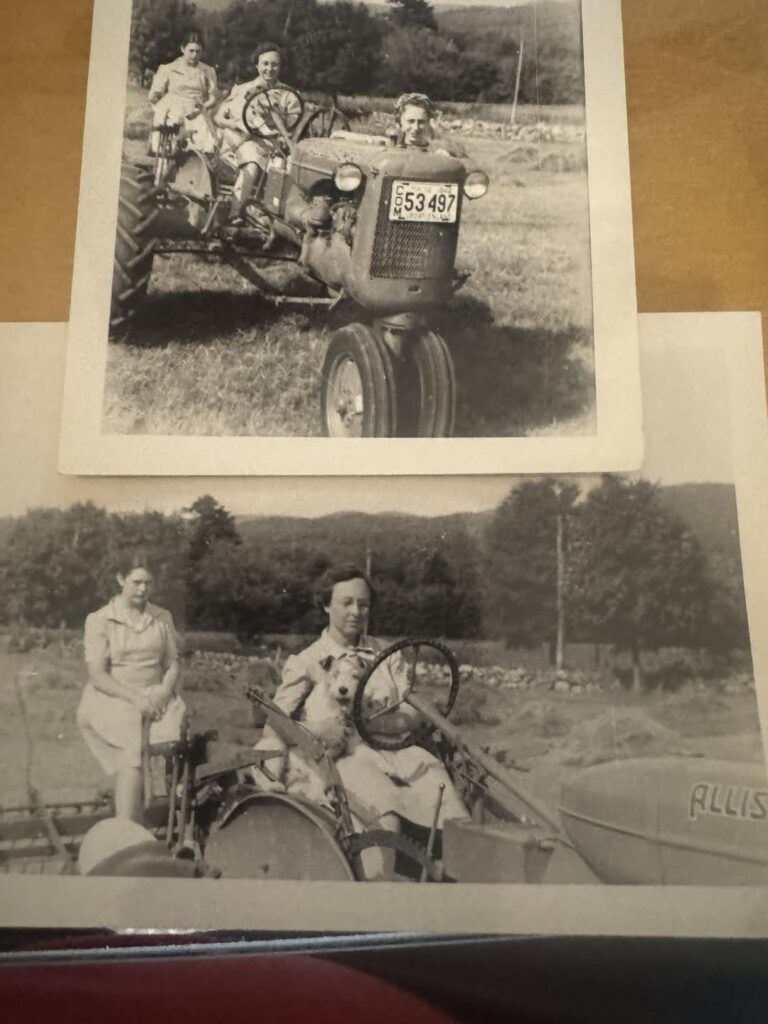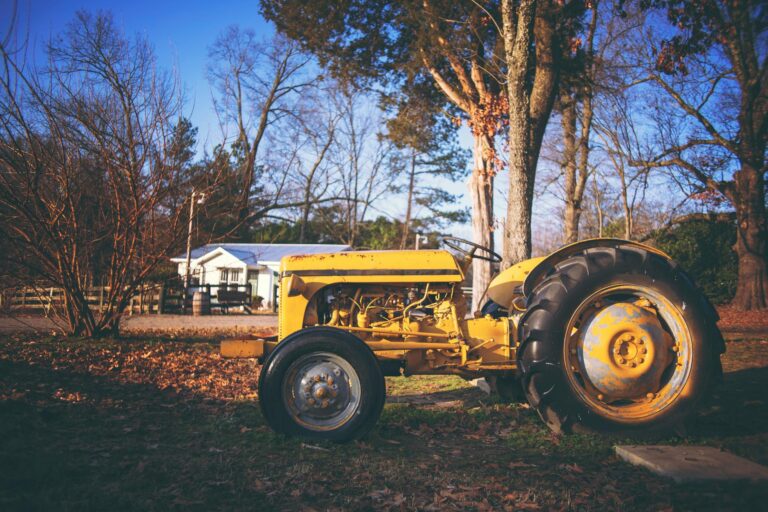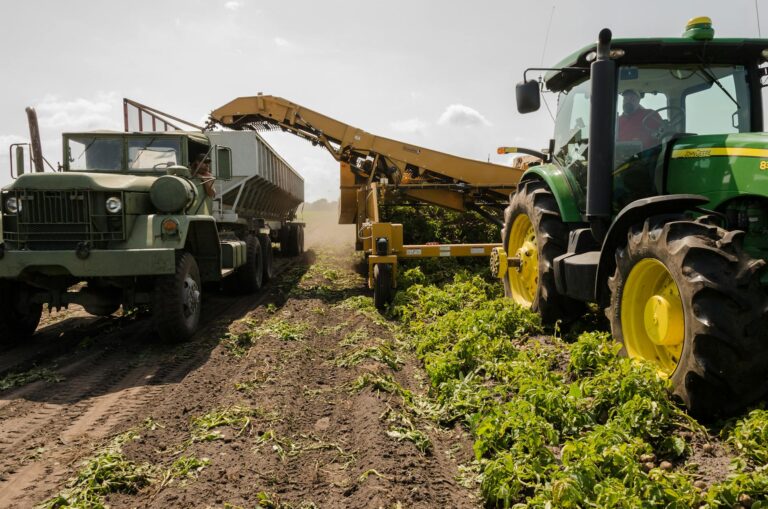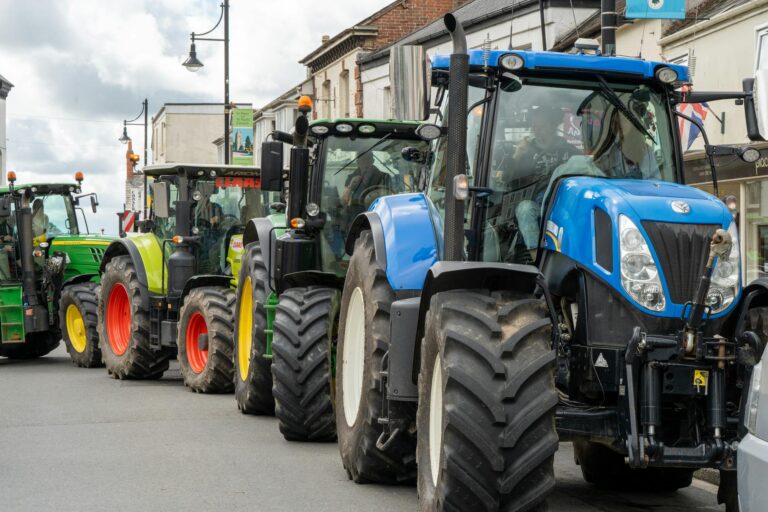When you think of legendary names in the world of agricultural machinery, Allis Chalmers tractors stand tall as a symbol of innovation, durability, and American farming heritage. From their humble beginnings in the early 20th century to their lasting influence in modern tractor design, Allis Chalmers built a legacy that still resonates with farmers, collectors, and machinery enthusiasts alike.
In this article, we’ll explore the history, popular models, features, collectibility, and the impact of Allis Chalmers tractors in today’s world.
The Origins of Allis Chalmers
The roots of Allis Chalmers go back to the mid-1800s, starting as a small manufacturing company that produced water wheels and mill equipment. The name “Allis-Chalmers” officially came into existence in 1901, following the merger of several companies, including Edward P. Allis Company and Fraser & Chalmers.
Though the company initially focused on industrial equipment, it entered the agricultural machinery market in 1914, forever changing the face of American farming.

Allis Chalmers Tractors: A Timeline of Innovation
🔸 The 1920s and 1930s – Entering the Tractor Market
Allis Chalmers launched its first tractor—the Model 10-18—in 1914. However, it was in the 1930s that they gained real traction with the introduction of the Allis Chalmers Model WC in 1933. This tractor was revolutionary because it was one of the first to use rubber tires instead of steel wheels.
🔸 The 1940s and 1950s – The Golden Age
During this period, Allis Chalmers became known for its bold orange paint and engineering prowess. Models like:
- Model B (1937-1957): Small, affordable, and ideal for small farms.
- Model WD (1948-1953): Known for its reliability and power.
- Model CA (1950-1958): A compact but powerful unit for diversified farming.
Allis Chalmers tractors helped mechanize agriculture at a rapid pace during and after World War II.
🔸 The 1960s and 1970s – Growing Bigger and Better
Allis Chalmers focused on larger, more powerful machines to match the growing demands of industrial farming. Key models include:
- D-series Tractors (D10–D21): With increased horsepower and new features like power steering and live power take-off (PTO).
- 190XT (1964–1971): A high-horsepower machine with a sleek design and turbocharged diesel engine.
🔸 The 1980s and Decline
Though still respected, Allis Chalmers faced stiff competition from John Deere, International Harvester, and Case. Financial difficulties led to the agricultural division being sold to Deutz-Fahr, a German company, in 1985. This marked the end of the Allis Chalmers tractor brand as most people knew it.
Source – Not just a show tractor. For me most of the enjoyment of having antique or classic tractors is getting them out and working with them. This one here does not get a chance to make it to very many of the tractor pulls like my D17 so when I get a chance I take it to the field. This summer we will be taking it to a few shows. The one we are most looking forward to is the Gathering of the orange in Upstate New York. Watch the video and enjoy the ride.
What Made Allis Chalmers Tractors Special?
✅ Distinctive Orange Color
Allis Chalmers chose Persian Orange as its signature color to stand out from competitors. This bright hue made their machines instantly recognizable in the field.
✅ Versatile Design
From row-crop tractors to industrial workhorses, Allis Chalmers offered machines for nearly every farming operation.
✅ Engineering Firsts
They were among the first to introduce:
- Pneumatic rubber tires
- Power shift transmission
- High-compression engines
- Hydraulic lifts
✅ Durable Build
These tractors were built to last. Even today, many Allis Chalmers tractors from the 1940s and 1950s are still in working condition, a testament to their durability and solid engineering.
Popular Allis Chalmers Tractor Models
Let’s look at some iconic models that made history:
🔸 Allis Chalmers Model B
- Years produced: 1937–1957
- Engine: 4-cylinder gasoline
- Horsepower: Around 17 HP
- Ideal for small farms and gardens
- Over 120,000 units sold
🔸 Allis Chalmers WD45
- Years produced: 1953–1957
- Horsepower: About 30-45 HP
- One of the first tractors with power steering
- Known for comfort and reliability
🔸 Allis Chalmers D21
- Years produced: 1963–1969
- First AC tractor to exceed 100 HP
- Diesel engine with turbocharged options
- Designed for large-scale farming
🔸 Allis Chalmers 190XT
- Years produced: 1964–1971
- A powerful yet cheap option
- Turbo diesel engine producing up to 93 HP
- Popular among larger farms
Maintenance and Restoration of Allis Chalmers Tractors
One of the reasons these tractors are still popular is their ease of maintenance. Enthusiasts and collectors often restore old models using aftermarket parts, many of which are still readily available.
Basic Tips for Restoration:
- Check the engine – Clean fuel lines, inspect the carburetor, and test compression.
- Replace old wiring – Safety first; always upgrade outdated electrical systems.
- Paint and decals – Use authentic Persian Orange paint for a classic finish.
- Use manuals – Factory manuals are available online and help greatly during repair.
Allis Chalmers Tractors for Sale: Are They Worth Buying Today?
Yes, especially for collectors or small-scale farmers.
🔍 Where to Find Them:
- Online marketplaces like eBay, TractorHouse, and Craigslist
- Antique tractor shows
- Farm auctions
💵 Price Range (As of 2025):
- Restored Model B: $2,000 – $4,500
- WD45 in running condition: $3,000 – $6,000
- D21 fully restored: $10,000 – $25,000
Prices depend on condition, model rarity, and restoration quality.
The Collectors’ Craze: Why People Love Allis Chalmers
Tractor collecting has grown into a popular hobby, and Allis Chalmers holds a special place in many collectors’ hearts. Here’s why:
- Nostalgia: Many farmers grew up seeing or using Allis Chalmers on the farm.
- Community: Many clubs and online forums are dedicated to restoring and discussing Allis Chalmers tractors.
- Rarity: Some limited-edition models are prized for their historical value.
Allis Chalmers’ Global Impact
Although most widely used in the U.S., Allis Chalmers tractors also found homes in:
- Canada
- Australia
- South America
- Parts of Europe
Their versatility and strength made them popular in varied terrain and climate conditions.
Final Thoughts: A Brand That Changed Farming Forever
While Allis Chalmers tractors may no longer roll off factory lines, their impact on agriculture, machinery innovation, and farming culture is undeniable. From the small Model B to the powerful D21, these tractors symbolize American ingenuity and rural resilience.
Whether you’re a hobbyist, a collector, or a farmer with a love for vintage machinery, owning an Allis Chalmers tractor is like holding a piece of history that still works hard today.
❓ Frequently Asked Questions (FAQs)
1. Are Allis Chalmers tractors still made today?
No, the original Allis Chalmers agricultural division ceased operations in the 1980s. Yet, Deutz-Allis and AGCO brands carried forward the legacy for a while.
2. Where can I buy parts for Allis Chalmers tractors?
You can find parts from online suppliers, eBay, tractor salvage yards, and specialized vintage tractor retailers.
3. Why are Allis Chalmers tractors orange?
They chose Persian Orange to stand out from the common green, red, and gray of other manufacturers.
4. Are Allis Chalmers tractors good for modern farming?
While they’re great for small farms or hobby use, most models lack the technology and horsepower needed for today’s large-scale commercial operations.
5. How much horsepower does the Allis Chalmers D21 have?
The D21 had over 100 horsepower, making it one of the most powerful tractors of its time.



